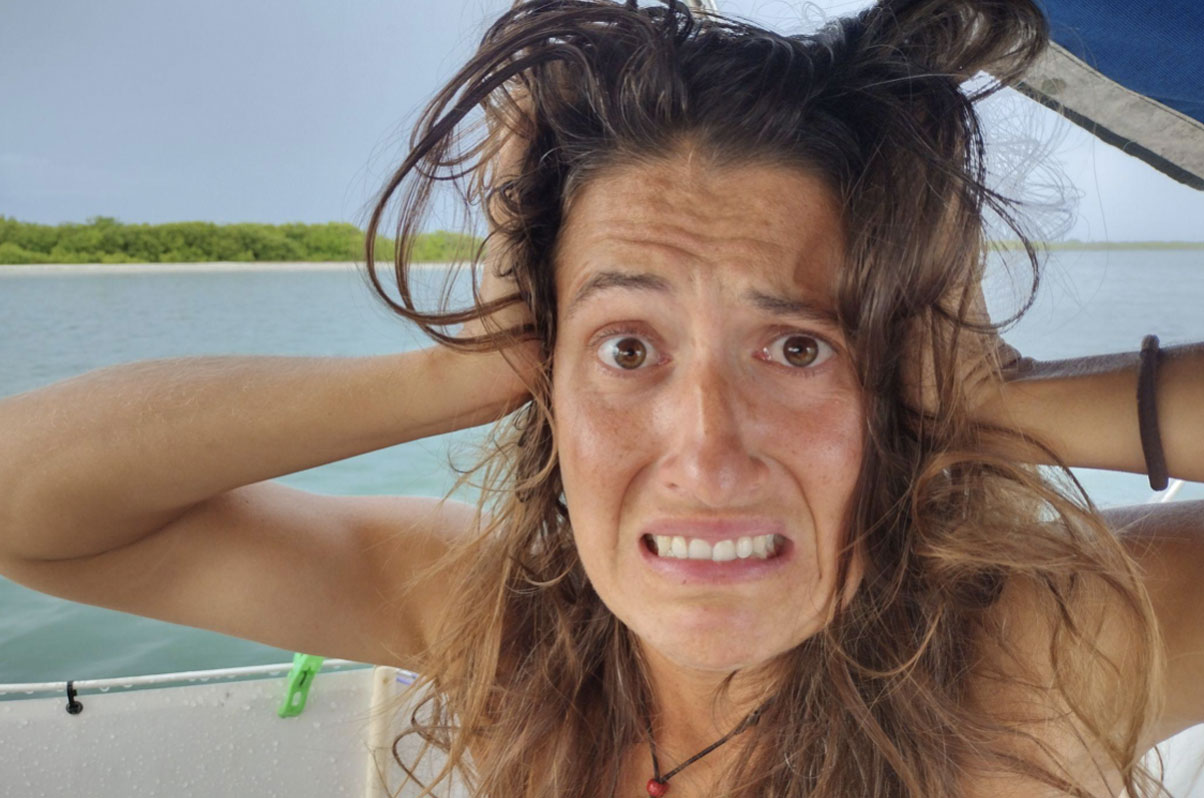
When someone told me I had to use the toilet in their head I was a little lost. Was this a joke? Cook your supper in the galley. What are you talking about? Oh and pull the sheets! What do you mean, bed sheets? If you’re a new sailor or someone who’s interested in buying a sailboat, the specific terminology related to sailboats can be overwhelming and sound like a whole new language. Don’t let this steer you away from embarking on an exciting new adventure! Here’s some of the boat lingo words to help you understand the most common sailboat terms and their meanings. You’ll look and sound smarter than I did when I first started sailing.
Hull: The hull is the main body of the sailboat, and it’s typically made of fibreglass, wood, or metal. The hull is responsible for keeping the boat afloat.
Keel: The keel is a heavy fin-like structure located at the bottom of the hull, which provides stability to the boat and helps prevent capsizing.
Rudder: The rudder is a flat, movable piece located at the stern (rear) of the boat. It helps steer the boat by redirecting the flow of water passing over it.
Mast: The mast is a tall, vertical structure that supports the sails. It’s typically made of aluminium. Climb to the top for the best view.
Sails: Sails are used to capture the wind and propel the boat forward. There are different types of sails, including the mainsail, the jib, the genoa, the spinnaker and the gennaker to name a few. But you don’t need that many to get started.
Mainsail: The mainsail tends to be the largest sail and is attached to the mast and the boom (a horizontal pole at the bottom of the sail).
Jib: The jib is a triangular sail located at the front of the boat. It works in conjunction with the mainsail to catch the wind and propel the boat forward.
Genoa: The genoa is a large sail that’s similar to the jib, but it’s bigger and overlaps the mainsail. It’s typically used in lighter wind conditions.
Spinnaker: The spinnaker is a large, balloon-shaped sail that’s used to catch wind from behind the boat. It’s typically used in downwind conditions and helps increase speed in very light wind conditions.
Gennaker: The gennaker is similar to a spinnaker but designed to be easier to handle and more versatile. It is used for downwind sailing in light to moderate wind conditions. It’s the prettiest sail on our sailboat in my opinion.
The gennaker and spinnaker and usually colourful and beautiful sails to fly, although I was intimidated by it at first.
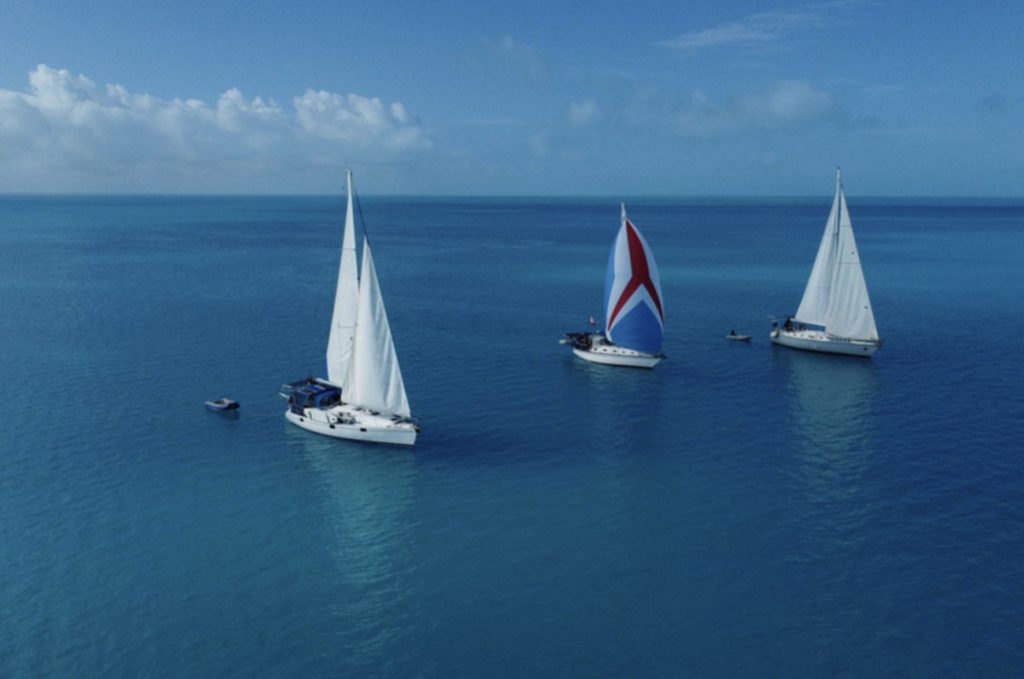
Boom: The boom is a horizontal pole located at the bottom of the mainsail and is attached to the mast. It helps support the sail and can also be used to control the sail’s angle to the wind. If someone yells boom, duck quickly if you don’t want to get hit on the head. BOOM!
Tiller: The tiller is a handle that’s used to steer the boat. It’s connected to the rudder and is located in the cockpit. The boat will go in the opposite direction than where you push the tiller, make sure to remember this. Not all boats have tillers, some have a wheel just like in a car.
Cockpit: The cockpit is the area where the crew sits while sailing. It’s typically located in the centre or aft (rear) of the boat. Also my favourite place to enjoy a meal or watch the sunset
Lines: Lines are ropes used to control the sails and other parts of the boat. There are NO ropes on a sailboat, only lines. Here are some common types of lines:
- Halyard: A halyard is used to raise the sails.
- Sheet: A sheet is used to control the angle of the sails. Not the ones on your bed.
Cleat: A cleat is a fitting used to secure lines to the boat.
Winch: A winch is a mechanical device used to control lines that require a lot of force, such as the halyard or sheet. It consists of a drum that the line is wrapped around and a handle that’s used to turn the drum.
Deck: The deck is the flat, horizontal surface on which the crew stands, watches sunsets from and steers the boat. It is typically made of non-slip material but you should always hold on to something or tie yourself in wet or rough conditions.
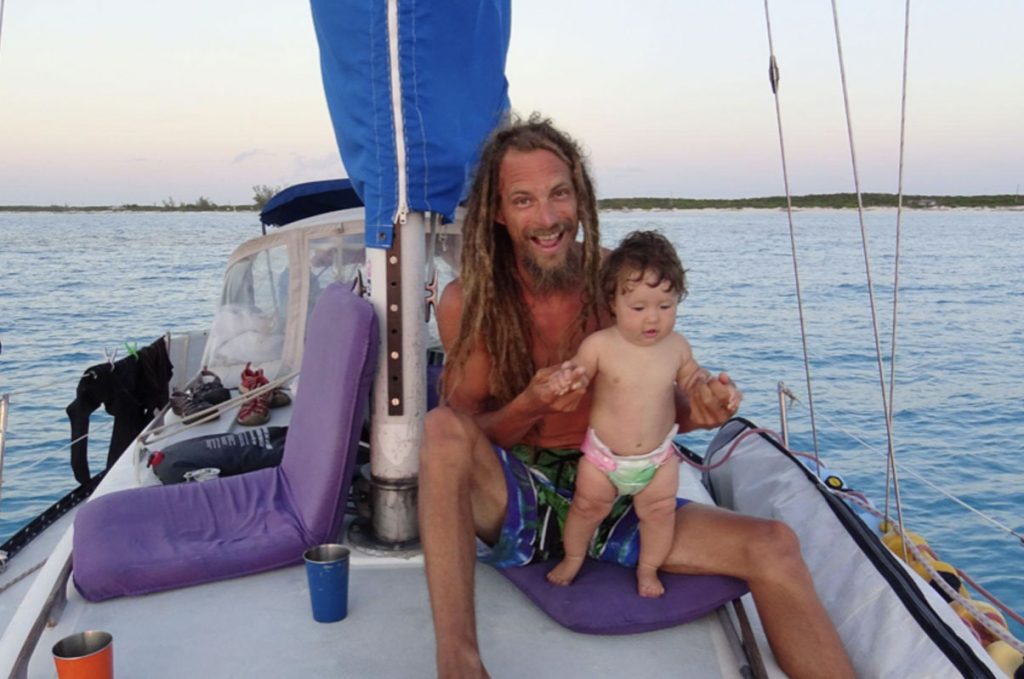
Below deck: This refers to the area of the boat that’s located below the main deck. Depending on the size and layout of the boat, the below-deck area may be divided into different compartments or cabins.
Companionway: The companionway is the stairway or ladder that leads from the cockpit (the outdoor area of the boat where the helmsman steers) down to the below-deck area.
Galley: The galley is the kitchen area of a sailboat. It typically includes a stove, sink, and counter space for food preparation. On larger sailboats, the galley may also include a refrigerator and other appliances.
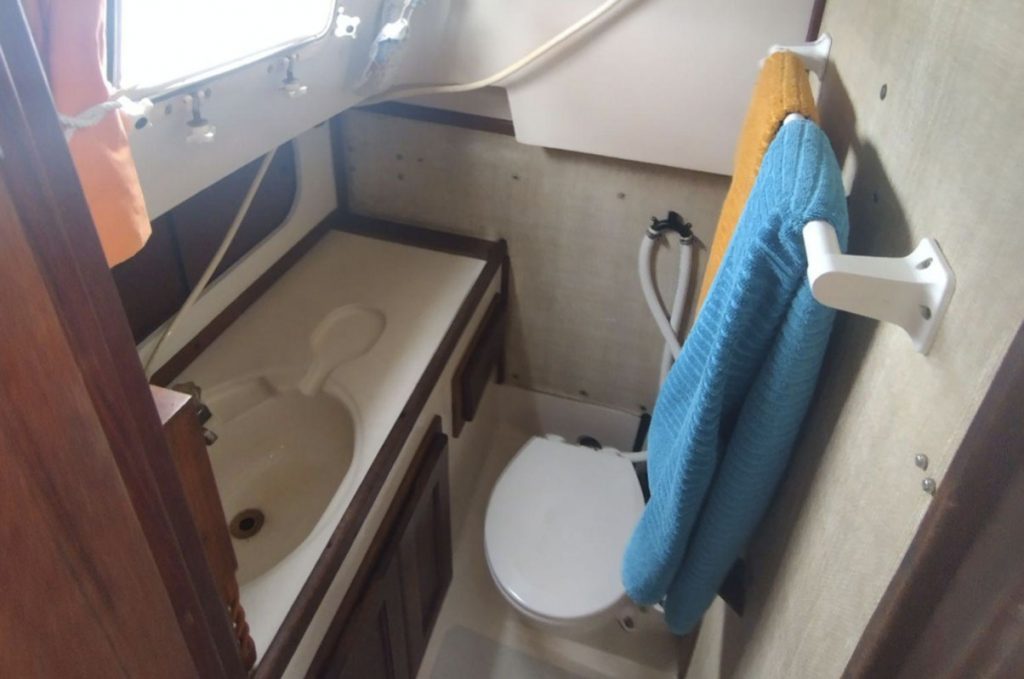
Head: The head is the bathroom on a sailboat. It typically includes a toilet, sink, and shower. On smaller sailboats like our Hunter, the head may be a compact one, where you shower while sitting on the toilet. On larger sailboats, it may be divided into separate compartments.
Dinette or saloon: The dinette is a seating area on a sailboat that’s used for dining or relaxing. It typically includes a table and bench seats, which can also be used for sleeping.
Berth: A berth is a sleeping area on a sailboat. It can range from a small, single bunk to a larger, double bed. Berths may be located in cabins or in open areas of the boat.
Bilge: The bilge is the lowest part of the boat’s interior, where water collects. A bilge pump is used to remove any water that enters the bilge. Always make sure it works if you don’t want the surprise of a wet floor. Not that we would know from experience. Oups.
Sailboats come in all sizes and shapes and serve various purposes.
- Dinghy: A dinghy is a small sailboat that’s typically less than 12 feet in length. It is often needed in conjunction with a bigger sailboat in order to travel to and from land.
- Day sailor: A day sailor is a sailboat that’s designed for day trips and is typically between 14 and 20 feet in length.
- Cruiser: A cruiser is a sailboat that’s designed for extended journeys and comfortable cruising. They have a spacious interior with a galley and sleeping quarters. This is what our Hunter 33 is.
- Bluewater sailboat: A blue water sailboat is designed for long-distance sailing, and they’re typically larger and more robust than day sailors or cruisers. They’re built to handle rough seas and strong winds and are designed to be self-sufficient for extended periods.
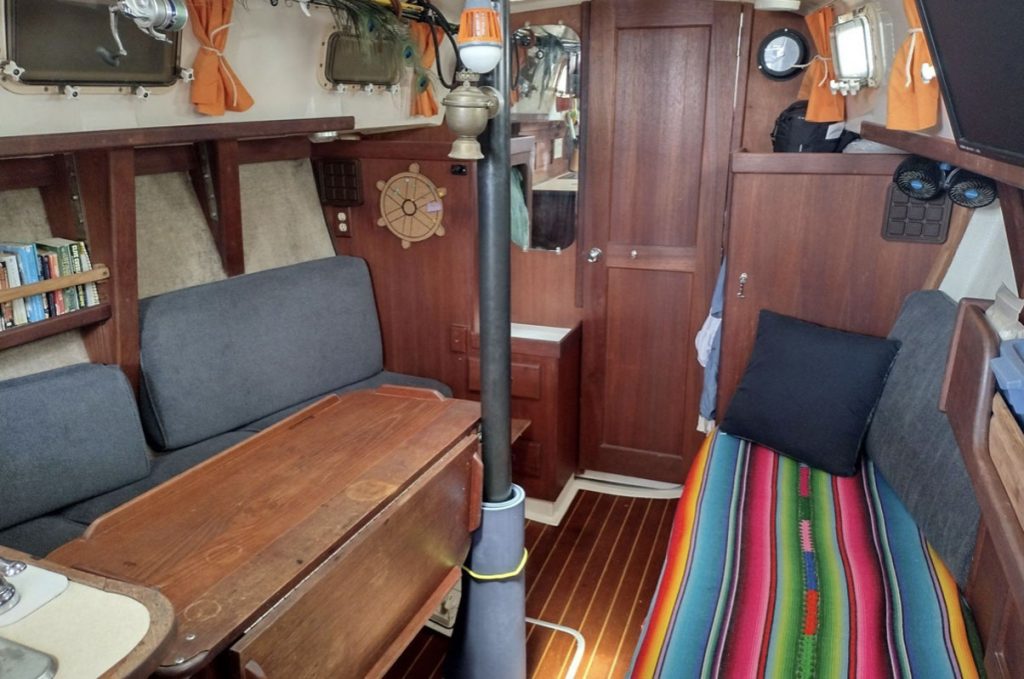
As we started shopping for a sailboat a few years back I had no idea what I was reading in the sailboats add’s description. So hopefully this article helps you not redo my mistakes. When shopping for a sailboat, it’s important to consider your specific needs and preferences for below-deck space, as well as the boat’s overall size, design, and condition. If you’re new to sailing, don’t be afraid to ask questions and seek guidance from more experienced sailors. It’ll save you a lot of trouble and potential mistakes.
Anne Alexandra Fortin
Cory and Alex share their adventure with weekly videos on their YouTube channel “Wildly Intrepid Sailing” and share stories on their website www.wildlyintrepid.com . Their dream is to travel the world and to live without any regrets.
